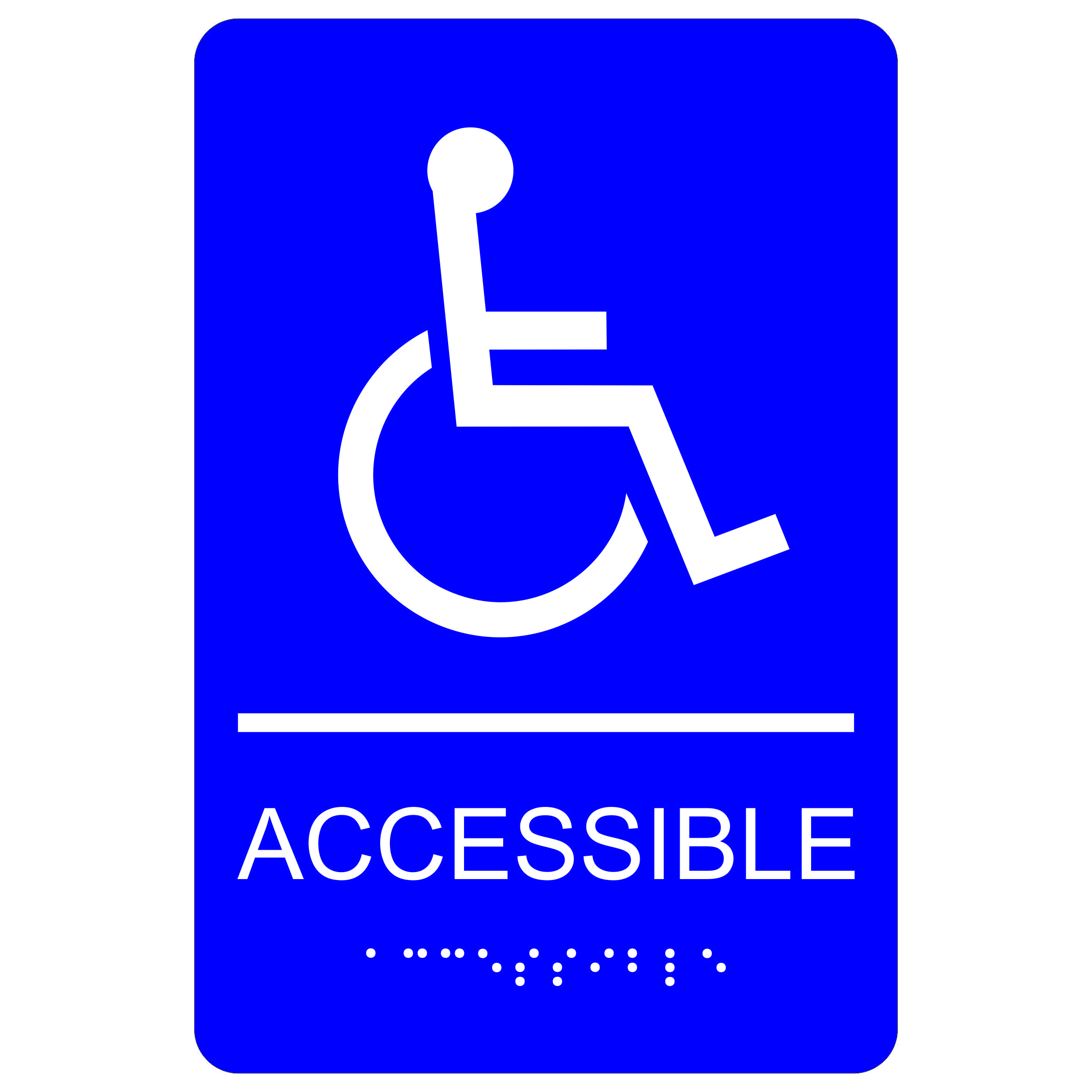Customizing ADA Signs to Meet Your Specific Demands
Customizing ADA Signs to Meet Your Specific Demands
Blog Article
Understanding the Value of ADA Signage for Inclusive Settings
In a significantly diverse culture, the value of ADA signage can not be overemphasized. By integrating functions like high-contrast visuals and responsive personalities, ADA signs plays an essential role in guaranteeing equal gain access to for individuals with impairments.
The Function of ADA Signs
ADA signs plays an essential function in making sure access and inclusivity in private and public spaces. These indications are necessary in assisting people with impairments, providing them with the required information to browse atmospheres individually and safely. The Americans with Disabilities Act (ADA) states certain guidelines for signs to make certain that individuals with visual, auditory, or cognitive problems can access the very same details as those without such difficulties.
The duty of ADA signs expands beyond plain compliance with lawful needs; it personifies a dedication to equal rights and non-discrimination. By implementing ADA-compliant indicators, services and establishments demonstrate their devotion to producing environments where everyone, despite their physical capacities, can take part completely and just as. This is particularly important in spaces like hospitals, schools, and government structures, where ease of access can directly influence a person's wellness and capability to gain access to vital solutions.
Furthermore, ADA signs adds to the general individual experience by reducing confusion and boosting wayfinding for all people. Clear, tactically put signage assists in managing foot traffic, lowering blockage, and boosting security. Basically, ADA signs is a cornerstone of inclusive style, helping with an environment where all people can navigate and engage with their surroundings efficiently.
Key Parts of ADA Signs
Reliable interaction goes to the heart of ADA signs, which incorporates numerous key components to make sure ease of access for people with disabilities. One of the key components is the usage of tactile characters, such as Braille and raised letters, which enable individuals with visual problems to read the indications via touch. The Braille must be Grade 2 and placed straight below the corresponding text.

One more vital component is the mounting place and elevation of the indications. ADA regulations define that signs should be mounted at a height that comes to all individuals, normally in between 48 and 60 inches from the floor. This makes sure that they are within reach for individuals in wheelchairs or of varying heights.
Benefits for People and Companies
While making sure access with ADA signs is a legal need, it also offers substantial advantages for both people and businesses. For individuals, particularly those with disabilities, ADA signs gives important availability to public spaces. It makes sure that individuals can navigate with buildings and centers effortlessly and independence, boosting their total experience by decreasing barriers that can impede their participation in various tasks. This inclusivity cultivates a feeling of belonging and self-respect for everybody, enhancing the importance of fair accessibility to services and possibilities.
For organizations, the application of ADA signage can result site here in improved client fulfillment and loyalty. By demonstrating a dedication to availability, companies can draw in a broader customer base, including people with impairments and their family members, that typically look for inclusive environments. Furthermore, ADA compliance can secure organizations from prospective lawful obstacles and fines related to non-compliance, securing their track record and monetary security.
In addition, ADA signage can contribute to a favorable workplace environment. Workers with specials needs gain from available navigating within their workspaces, promoting performance and morale (ADA Signs). Eventually, investing in ADA signs not just satisfies legal obligations but also improves the inclusivity, credibility, and operational success of businesses
Typical Kinds Of ADA Signage
When talking about the different types of ADA signage, it is necessary to recognize the certain types that provide to different availability requirements. ADA signage is developed to guarantee that individuals with specials needs can browse areas securely and separately.
Another considerable type of ADA signs is directional indicators. These provide clear support to numerous areas within a facility, making sure that all people, including those with wheelchair problems, can conveniently find their way - ADA Signs. They frequently include signs and high-contrast colors to improve visibility and comprehension
Informative indicators are also crucial, offering necessary details regarding centers, such as running hours and plan guidelines. On top of that, governing signs convey obligatory guidelines, like "No Smoking" or "Departure Path," ensuring compliance with safety and security procedures.
Finally, recognition indicators are made use of to classify areas and rooms, making it less complicated for everyone, despite capacity, to recognize particular areas. These signs often consist of pictograms to enhance global understanding. look at here now Jointly, these common kinds of ADA signs play a crucial function in producing available and inclusive settings.

Applying Efficient Signs Solutions
Carrying out efficient signage options needs a tactical strategy to guarantee availability and compliance with the ADA standards. The process starts with a thorough assessment of the center to determine the particular signage requires based on the environment's feature, format, and the population it serves. This analysis must include factors to consider for both irreversible and momentary signs, each needing distinct style and placement approaches.
The option of materials and layout aspects is essential. Signage must be made from resilient products to stand up to environmental variables while guaranteeing high visibility and clarity. Key attributes such as contrasting colors, responsive aspects, and non-glare coatings are vital to accommodate people with aesthetic disabilities. Furthermore, the combination of Braille and raised characters have to stick to ADA requirements to supply equivalent access.
Correct installation is the next important action in implementing effective signage options. Indicators need to be placed at compliant heights and locations to guarantee they are easily discoverable and readable. Regular testimonial and upkeep of signs ensure continued compliance and effectiveness. Engaging with ease of access professionals during the planning and application phases can offer important insights, guaranteeing that signage not only meets legal requirements but also enhances the inclusivity of the environment.

Verdict
ADA signs plays an essential function in producing inclusive environments by ensuring conformity with availability standards and improving navigation for all customers. Trick elements such as tactile characters, high-contrast layouts, and right installing heights are essential for reliable execution. These aspects promote equal rights, non-discrimination, and self-reliance, profiting both individuals with services and impairments. By cultivating much safer and more inviting rooms, ADA signs emphasizes a commitment to inclusivity, ultimately adding to an extra equitable culture for every person.
By incorporating features like high-contrast visuals my company and tactile personalities, ADA signs plays a pivotal function in making certain equal gain access to for people with disabilities. The Americans with Disabilities Act (ADA) sets forth certain standards for signage to guarantee that people with aesthetic, auditory, or cognitive disabilities can access the exact same details as those without such challenges.
Effective communication is at the heart of ADA signs, which includes numerous key elements to make sure access for individuals with impairments.While guaranteeing availability via ADA signs is a lawful need, it also offers significant benefits for both services and individuals. ADA signage is created to make sure that people with specials needs can browse areas securely and separately.
Report this page